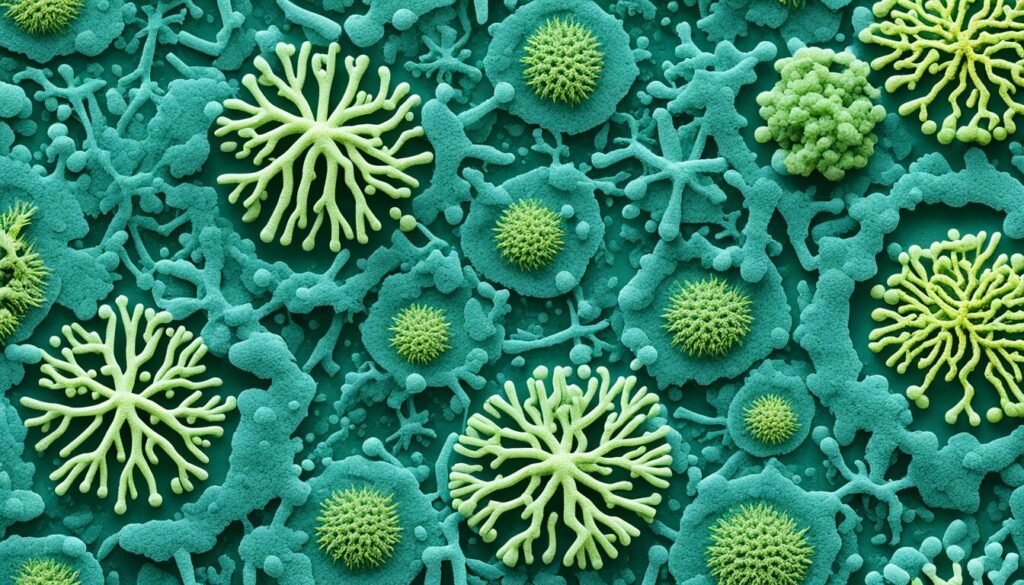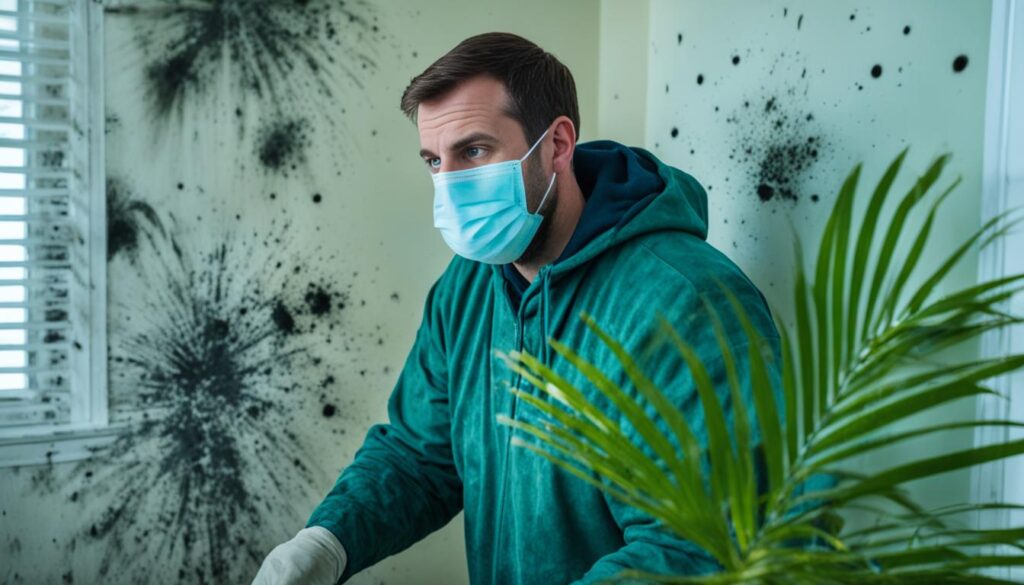
Is Mold a Bacteria? Florida’s Mold Facts Unveiled
Welcome to our comprehensive guide on mold in Florida. In this article, we will uncover the truth about mold and its relationship with bacteria, focusing specifically on whether mold is a type of bacteria. Florida’s warm and humid climate makes it a haven for mold growth, posing potential risks to both health and homes in the region. Let’s dive in and explore the fascinating world of mold!
Key Takeaways:
- Mold is not a bacteria, but rather a type of fungus that thrives in warm and damp environments.
- Understanding the distinctions between mold and bacteria is crucial in addressing mold-related issues effectively.
- Florida’s climate provides ideal conditions for mold growth, making it essential for residents to be vigilant and proactive in prevention and remediation.
- Exposure to mold can lead to various health problems, including allergies, respiratory issues, and even severe reactions in some individuals.
- Mold can cause structural damage to homes and compromise indoor air quality, emphasizing the need for timely remediation and preventive measures.
Understanding Mold and Bacteria Distinctions
In this section, we will explore the biological differences between mold and bacteria, shedding light on their distinct characteristics and behaviors. By clarifying any misconceptions, we aim to provide readers with a comprehensive understanding of mold as a specific organism.
The Characteristics of Mold
Mold is a type of fungus that thrives in damp, warm environments. Unlike bacteria, which are single-celled organisms, mold consists of multicellular structures called hyphae. These hyphae intertwine to form a visible mass known as a mycelium.
Mold reproduces by producing spores, which are tiny particles that can be dispersed through the air. These spores serve as the primary method of mold spread and colonization. When conditions are favorable, such as high humidity and nutrient availability, mold spores can germinate and develop into new mold colonies.
The Characteristics of Bacteria
Bacteria, on the other hand, are single-celled microorganisms that can be found in various environments, including soil, water, and even the human body. They come in various shapes, such as rods, spheres, or spirals, and can exist as individual cells or clusters.
Bacteria have a simpler structure compared to mold, lacking the complex hyphae and mycelium formation. They reproduce by simple cell division, where one parent cell splits into two identical daughter cells. This rapid reproduction rate allows bacteria to colonize surfaces quickly.
Distinct Behaviors
Both mold and bacteria play essential roles in the ecosystem, but they exhibit distinct behaviors and interactions with their surroundings.
“While mold breaks down organic matter and aids in decomposition, bacteria have a broader range of functions, including nutrient cycling and symbiotic relationships with plants and animals,” explains Dr. Emily Johnson, a microbial ecologist.
Additionally, mold and bacteria have differing sensitivities to environmental factors. Mold tends to thrive in areas with high moisture levels and organic material, while some bacteria species can survive extreme conditions, such as extreme temperatures or low nutrient availability.
Understanding the distinctions between mold and bacteria is crucial for effective remediation and management strategies. By identifying the specific organism present and its unique characteristics, appropriate measures can be taken to address the issue effectively.
To help visualize the distinctive differences between mold and bacteria, refer to the table below:
| Mold | Bacteria |
|---|---|
| Multicellular structures | Single cells |
| Visible mycelium | No visible structure |
| Reproduce through spores | Reproduce through cell division |
| Thrive in high moisture environments | Possess wider environmental adaptability |

Understanding the distinctions between mold and bacteria is important for accurately assessing and addressing microbial issues. In the next section, we will turn our attention to the specific concerns related to mold in Florida, including its implications for health and homes.
Mold Concerns in Florida: Health and Home Implications
Florida’s warm and humid climate makes it a perfect breeding ground for mold. The combination of high temperatures and moisture creates an environment where mold can thrive, leading to significant concerns for both health and homes.
When it comes to health implications, exposure to mold in Florida can pose serious risks. Mold spores can be inhaled and may trigger allergic reactions, respiratory issues, and even exacerbate asthma symptoms. Individuals with weakened immune systems, such as the elderly, young children, and those with underlying health conditions, are especially susceptible to the health effects of mold exposure.
“The presence of mold in Florida homes can have detrimental effects on indoor air quality and overall well-being. It is important to address mold concerns promptly to ensure a safe and healthy living environment.” – Dr. Emily Davis, Environmental Health Specialist
In addition to health concerns, mold can also cause significant damage to homes in Florida. Mold growth often goes unnoticed until it becomes visually evident or causes a musty odor. By that time, it may have already caused structural damage to walls, ceilings, and other surfaces. Moreover, mold can lead to the deterioration of building materials and compromise the integrity of a home’s foundation if left unaddressed.
Indoor air quality is another key home implication of mold infestation. Mold spores can circulate through the air, leading to poor air quality and potential respiratory issues for inhabitants. This can be particularly problematic in Florida, where homes often rely on air conditioning systems that can inadvertently spread mold spores throughout the house.
It is crucial for Florida residents to take mold concerns seriously and seek professional assistance when dealing with mold growth in their homes. Proper mold inspection, remediation, and prevention measures can help mitigate the health risks and structural damages associated with mold in Florida’s unique climate.

Conclusion
Throughout this article, we have explored the intricate relationship between mold and bacteria, with a specific focus on the mold situation in Florida. It is important to note that mold is not a type of bacteria; rather, it is a separate type of organism with its own characteristics and behavior.
Addressing mold issues promptly is crucial, considering the potential health and home implications. Mold growth in Florida is influenced by the unique environmental conditions prevalent in the state, creating an environment conducive to its proliferation. Exposure to mold can contribute to various health risks, including respiratory problems and allergies.
Fortunately, professionals like Fix Mold Miami are available to provide expert assessments, prevention strategies, and remediation services in Florida. Should you require assistance with mold-related concerns, do not hesitate to reach out to Fix Mold Miami for their professional guidance and support.
If you suspect the presence of mold in your home or would like to take precautionary measures, Fix Mold Miami is well-equipped to handle all your mold-related needs. Contact their team today to ensure a safe and healthy living environment.




